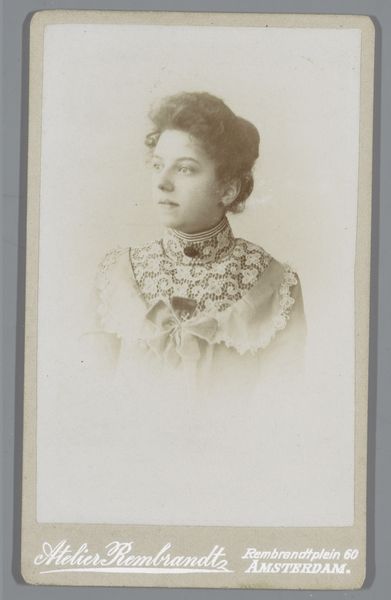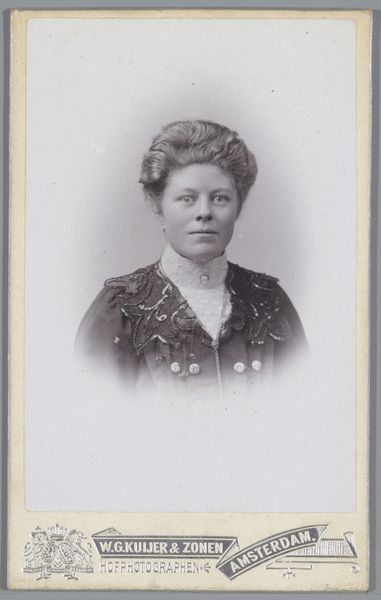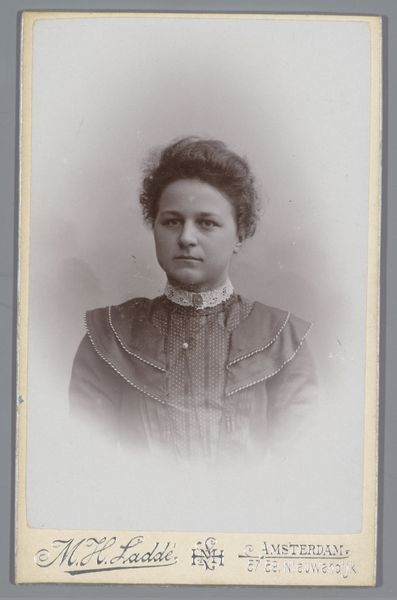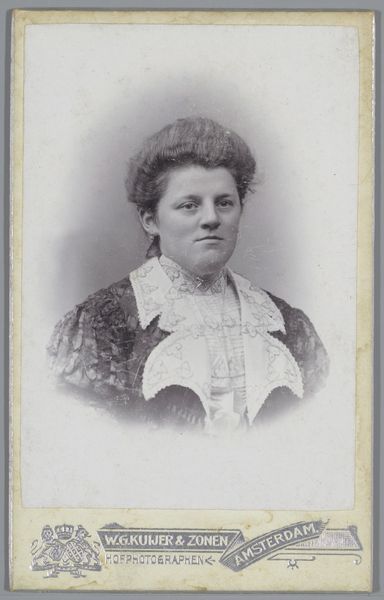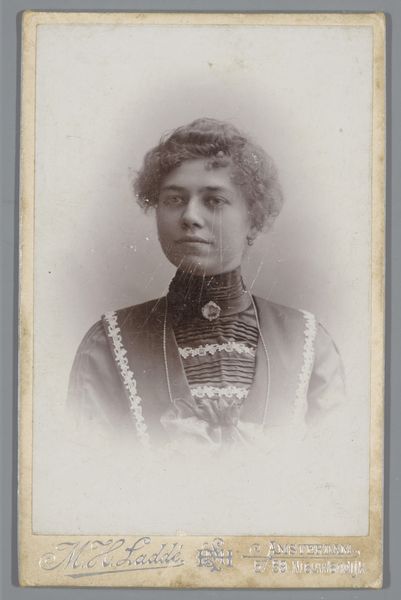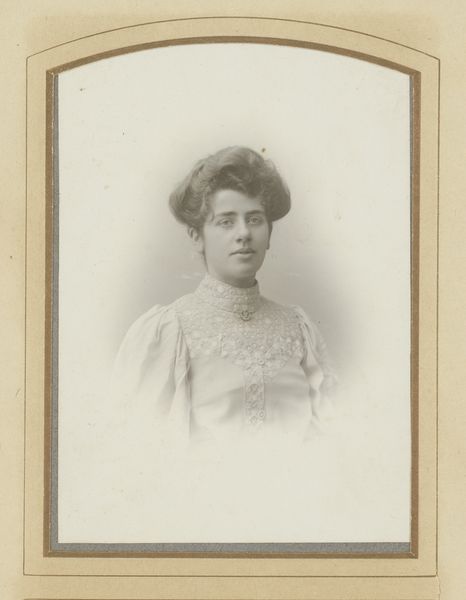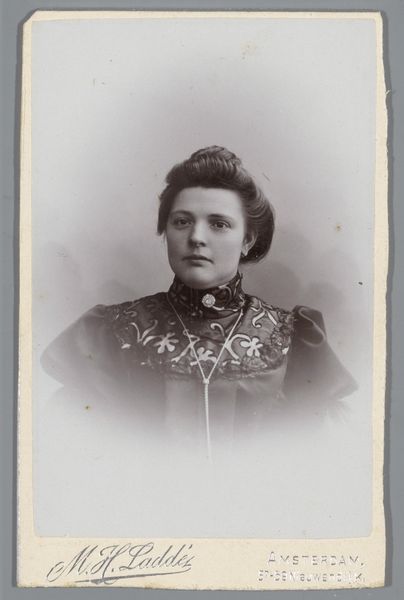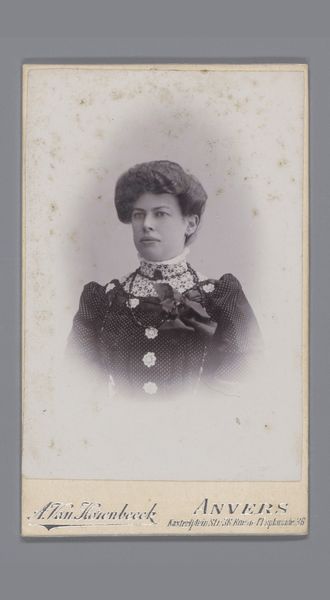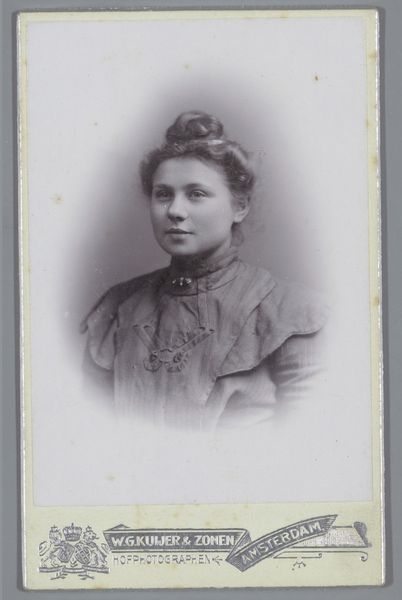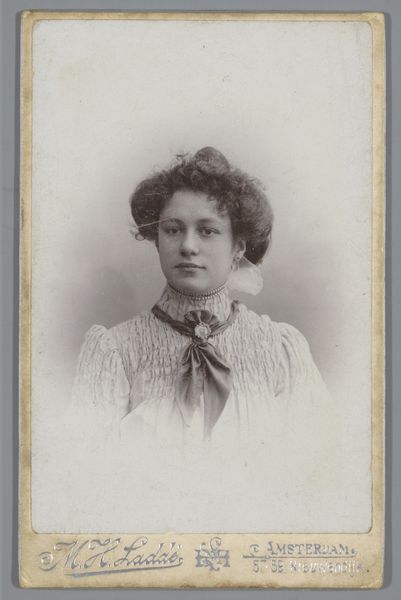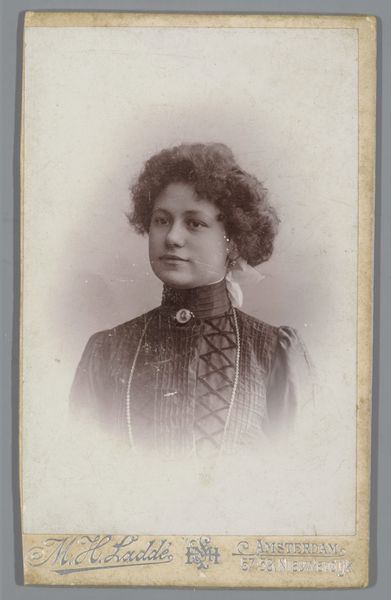
photography, gelatin-silver-print
#
portrait
#
photography
#
gelatin-silver-print
#
academic-art
#
realism
Dimensions: height 105 mm, width 66 mm
Copyright: Rijks Museum: Open Domain
Curator: This is a striking photograph titled “Portret van een onbekende vrouw”, or "Portrait of an Unknown Woman", captured between 1892 and 1906 by Machiel Hendricus Laddé, and currently residing in the Rijksmuseum. Editor: She appears self-possessed. I am drawn to the sharp contrast achieved through the gelatin silver print and the anonymous nature of this portrait, quite common, considering the format. Curator: Indeed. This format offered accessibility. The gelatin silver print democratized portraiture allowing wider circles of the public to engage in production, challenging who held the right to visibility. It moves photography away from pure aesthetic practice toward daily production and documents of material relations and human connections, however anonymized. Editor: Good point. It really pushes the boundaries. Looking closely, the backdrop appears purposefully plain, a far cry from the staged theatrics sometimes employed. It places absolute focus on the subject, and hints to a quiet domesticity with her choice of dress. How does that fit within what we understand of that era? Curator: The dress offers clues about social status and economic circumstance, while the anonymous woman in the photograph might actually be a relative or the woman who does housework, reflecting the artist's socio-economic standing, and offering more inclusive narratives from an emerging middle-class public in visual art. Editor: The "realist" rendering in the woman’s features, without airbrushing or exaggerated lighting is remarkable given photography's relatively recent adoption in the broader visual culture. Curator: Right, it challenges high art painting even further. It captures a stillness and subtle human emotion without being dramatic or idealized. And, in capturing women who did not appear to other members of their class, Laddé also offered an entry point for women artists and subjects for other emerging members of the bourgeois class. Editor: That's a nuanced point; she could well have inspired those looking to gain position in society to model behaviors. And these types of photographs provided a resource that circulated amongst broader members of the public, who might adopt a similar demeanor for their family portrait. Curator: Yes, understanding photography as social production, or "ready made reality," alters how we approach what this image represents. The history of "unknown" subjects broadens when we examine access, consumption and material practices in relation to the history of visual culture. Editor: Ultimately, a potent reminder of how the unseen details often hold the greatest significance. Curator: Precisely. This print makes us reconsider visibility beyond aesthetics.
Comments
No comments
Be the first to comment and join the conversation on the ultimate creative platform.
